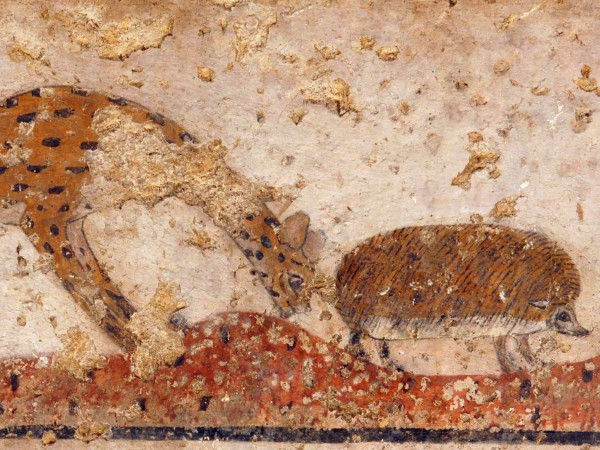6,000-Year-Old Egyptian Cave Art Reveals Insight into Mammal Extinction in Nile Valley

Ancient Egyptian cave art depicting animals has helped archaeologists piece together a record of the large mammals that lived in the Nile Valley over the past 6,000 years.
Now, a new analysis of the record shows that species extinctions, likely caused by a growing human population and drying climate, have made the ecosystem progressively less stable.
The latest study in the journal Proceedings of the National Academy of Sciences, found that local extinctions of mammal species led to a steady decline in the stability of the animal communities in the valley.
Now there are less species in the area, the ecosystem is more sensitive to losses, according to the study author Justin Yeakel.
"As the communities lost species, the system became more unstable and this was largely due to the loss of redundancy in the system," Yeakel told NBC News.
Only eight species of the 37 that existed around six thousand years ago remain today. Lions, wild dogs, oryx and giraffe are among the species recorded in artwork from the late Predynastic period that are no longer found in Egypt today.
"As the number of species declined, one of the primary things that was lost was the ecological redundancy of the system," Yeakel said.
"There were multiple species of gazelles and other small herbivores, which are important because so many different predators prey on them. When there are fewer of those small herbivores, the loss of any one species has a much greater effect on the stability of the system and can lead to additional extinctions."
For the study, Yeakel teamed up with ecological modellers Mathias Pires of the University of Sao Paolo, Brazil, and Dr Lars Rudolf, of the University of Bristol, to identify five episodes over the past 6,000 years when dramatic changes occurred in Egypt's mammalian community.
Three of these coincided with extreme environmental changes, as the climate shifted to more arid conditions.
These drying periods also coincided with upheaval in human societies, such as the collapse of the Old Kingdom around 4,000 years ago and the fall of the New Kingdom about 3,000 years ago.
"There were three large pulses of aridification as Egypt went from a wetter to a drier climate, starting with the end of the African Humid Period 5,500 years ago when the monsoons shifted to the south," Yeakel said.
"At the same time, human population densities were increasing, and competition for space along the Nile Valley would have had a large impact on animal populations."
However, ancient artwork is not always an accurate way to determine past extinct species.
Linda Evans, an environmental historian at Macquarie University in Sydney, told Science Magazine that artists in later periods sometimes copied older tombs.
Ancient Egyptians "didn't just depict what they saw," Evans said. "Egyptian art has a grammar to it. You have to be really careful and guarded about the conclusions you draw."
© Copyright IBTimes 2025. All rights reserved.






















